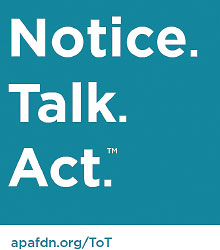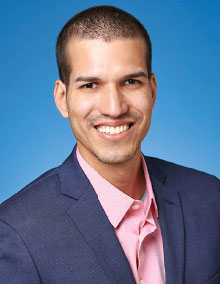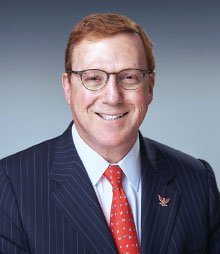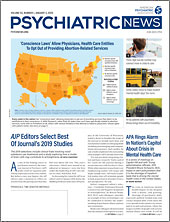When he was growing up, Chris Seeley didn’t talk much about his challenges with mental health. But there were clues that he was struggling, and the adults in his life probably noticed.
He secluded himself, engaged in risky behaviors such as drug and alcohol use, switched friend groups, and skipped class. His mental health journey began in fourth grade, and his first suicide attempt was around seventh or eighth grade. The day before his senior year of high school, he was faced with a choice: start treatment or go to jail.
Seeley chose treatment, but he wishes he had been connected to support services sooner. Now the program director of school and justice initiatives with the American Psychiatric Association Foundation (APAF), Seeley works to encourage more schools to adopt the Typical or Troubled? program so more students are surrounded by educators and school staff who can identify those who may have a mental health problem and do something to help.
Last year, the APAF redeveloped the Typical or Troubled? program, which includes the key messaging: NOTICE. TALK. ACT. Through both an electronic learning module and a live, skill-based training session, school staff learn how to notice warning signs, talk about mental health, and act appropriately to refer students to resources.
APA members are an important part of the NOTICE. TALK. ACT. approach. Through the instructor certificate training, psychiatrists can deliver the Typical or Troubled? curriculum to middle and high schools across the country. Certified instructors provide in-person training and feedback to school staff, showing them how to effectively communicate with students about mental health and how to start and close a conversation.
Psychiatrists can share their expertise on talking about mental health, conducting motivational interviews, and explaining confidentiality in the process. “We’re here to prevent mental illness, not just treat mental illness,” said Hector Colon-Rivera, M.D., an attending physician at the University of Pittsburgh Medical Center, medical director of the Philadelphia nonprofit Asociación Puertorriqueños en Marcha Inc. Behavioral Health Program, and president of APA’s Caucus of Hispanic Psychiatrists.
A certified instructor, Colon-Rivera is taking the revamped Typical or Troubled? program to Puerto Rico in January, where he had already introduced the first iteration of the program (
Psychiatric News).
“The Typical or Troubled? program has been a very effective program,” said Saul Levin, M.D., M.P.A., APA CEO and medical director and chair of the APAF Board of Directors. “Since it began in 2006, the program has trained more than 80,000 school personnel who work with more than a million students in more than 220 schools. This past year was a highly successful pilot stage for our school-based program, reaching six districts and 10 schools in total, and 86 members went through our certification training. We invite more APA members to become certified trainers and make a difference in the lives of young people and help them get a sure footing in life.”
It’s vitally important that adults who work with students understand the warning signs of mental health challenges, Seeley said. Growing up, he had strong relationships with some of the adults in his life, and while he may not have shared details about the trauma he was experiencing, the support they offered was hugely important to strengthening his self-worth.
The Typical or Troubled? program shows school staff that their responsibility is to connect students with the services they need, Seeley said. It’s not to provide treatment, but to walk students to the door, even if the student refuses to engage. “It might take 15,000 times,” Seeley said, “but if they keep doing it, then maybe on the 15,001st time, the student walks through that door.” ■
More information on the program is posted
here or can be obtained by emailing Tanya Thabjan at
[email protected].



